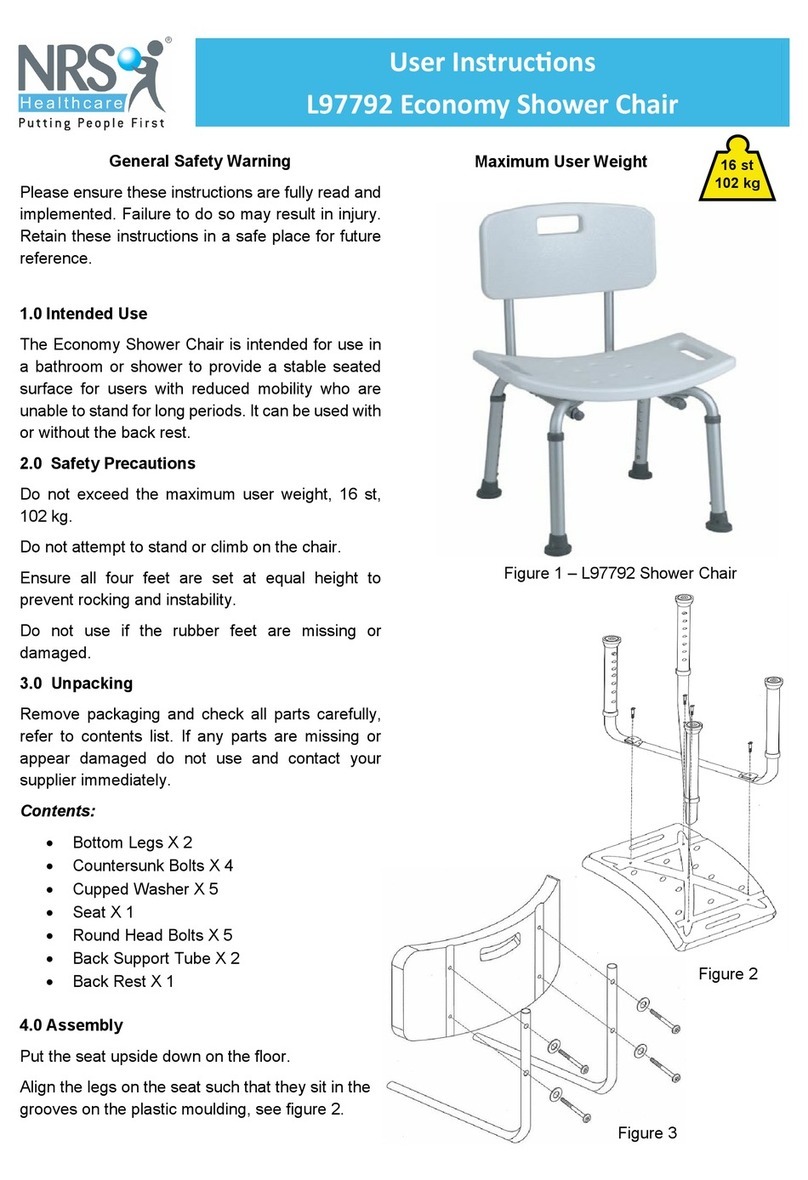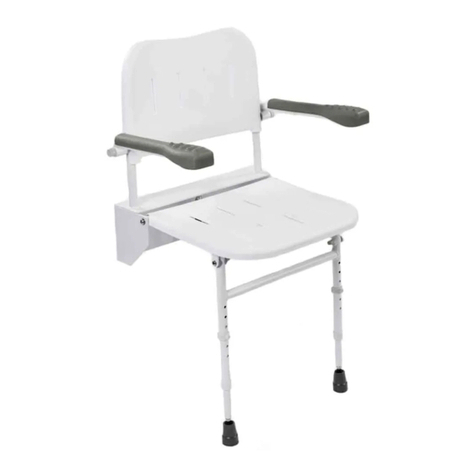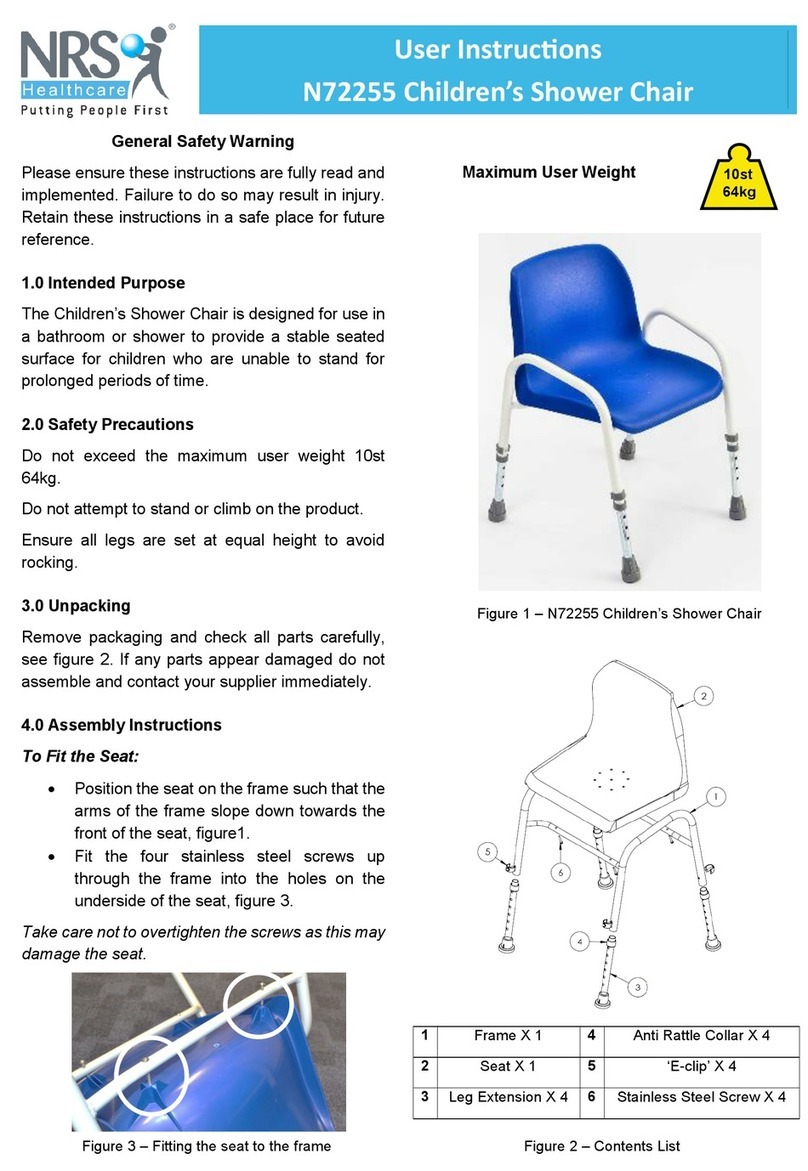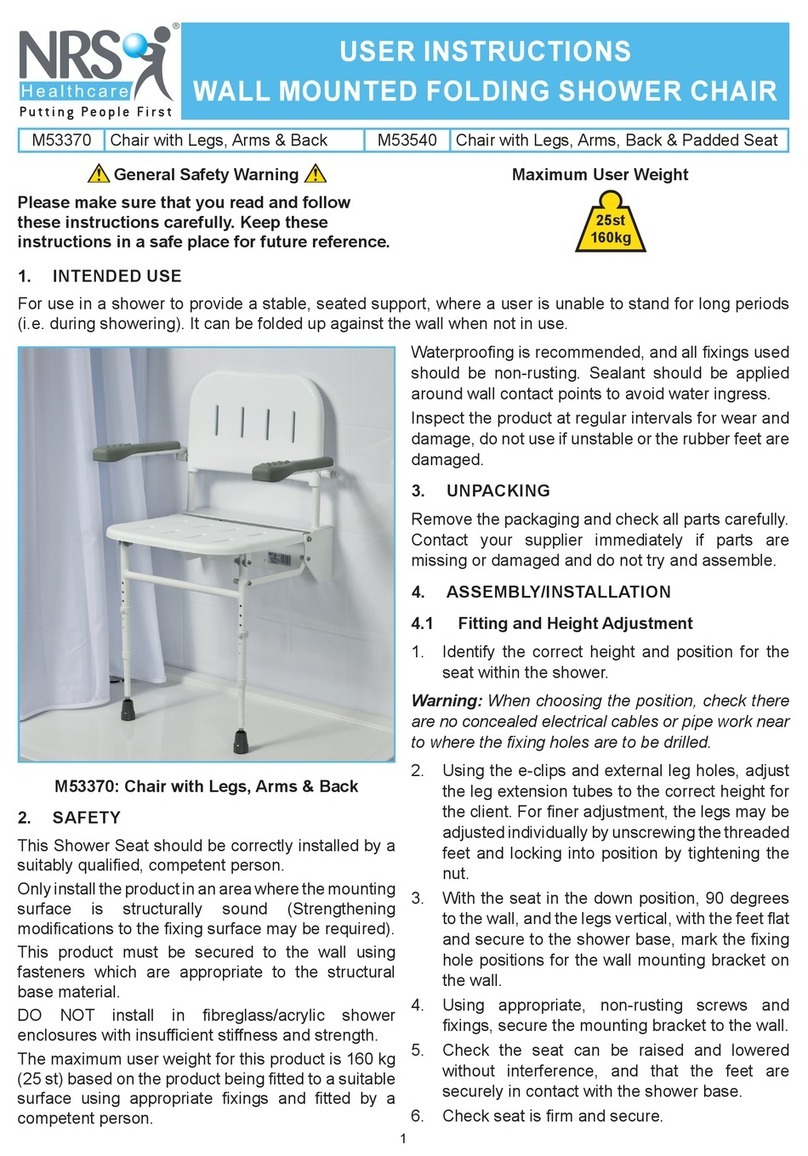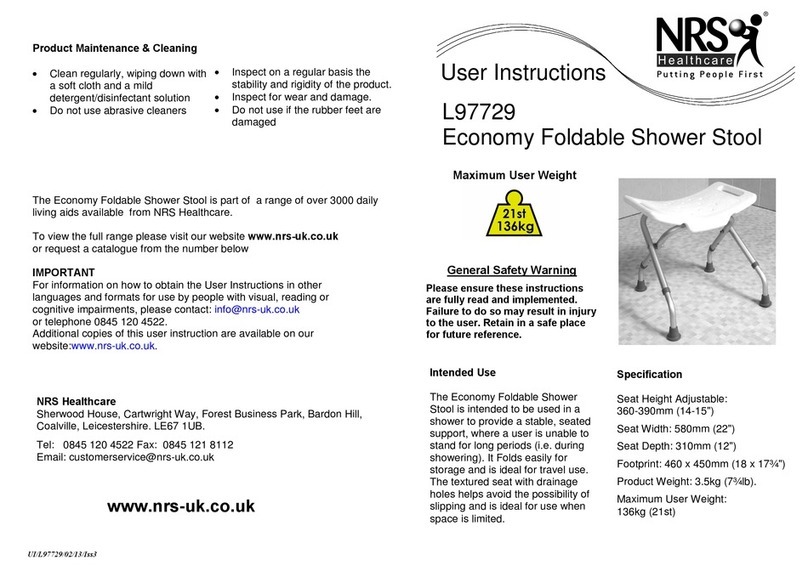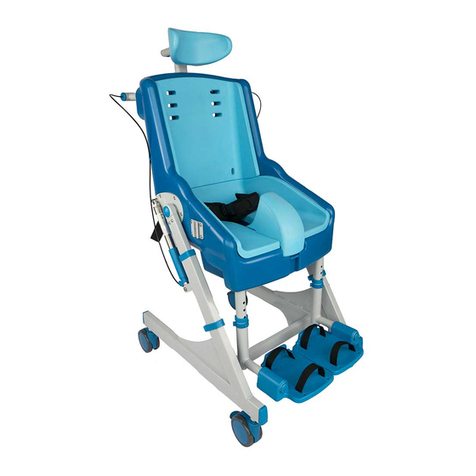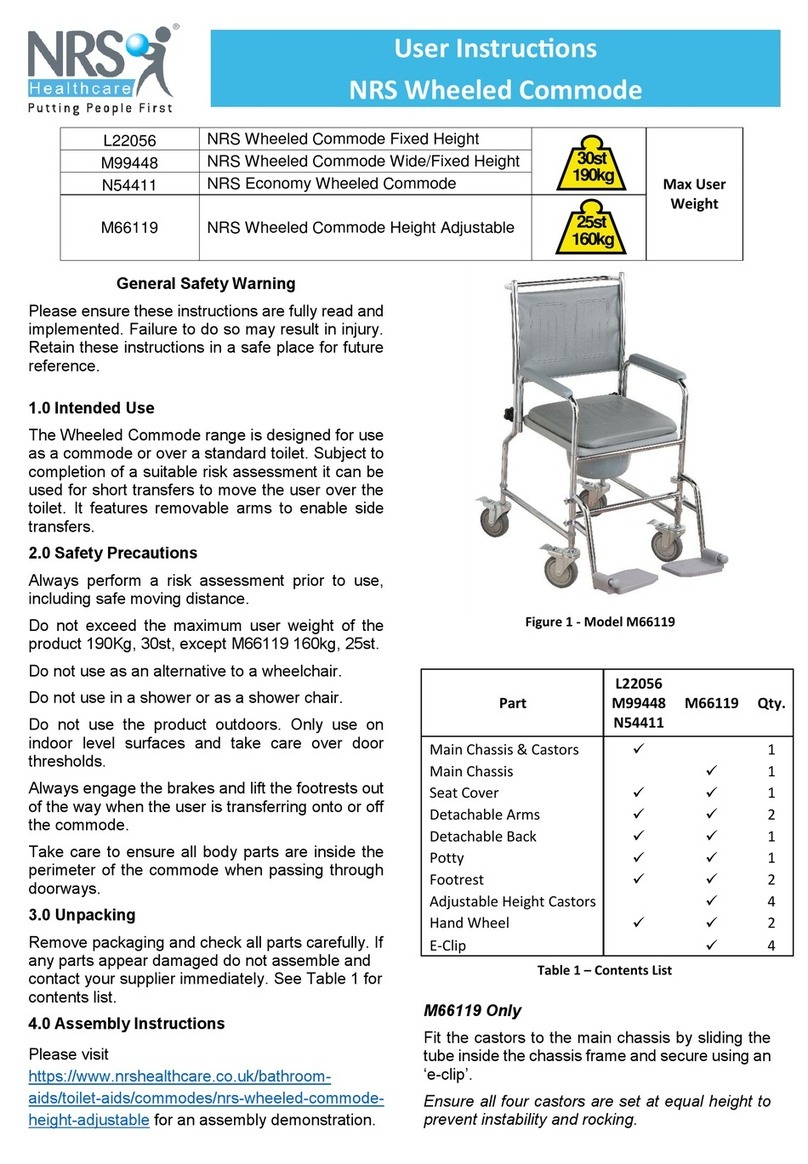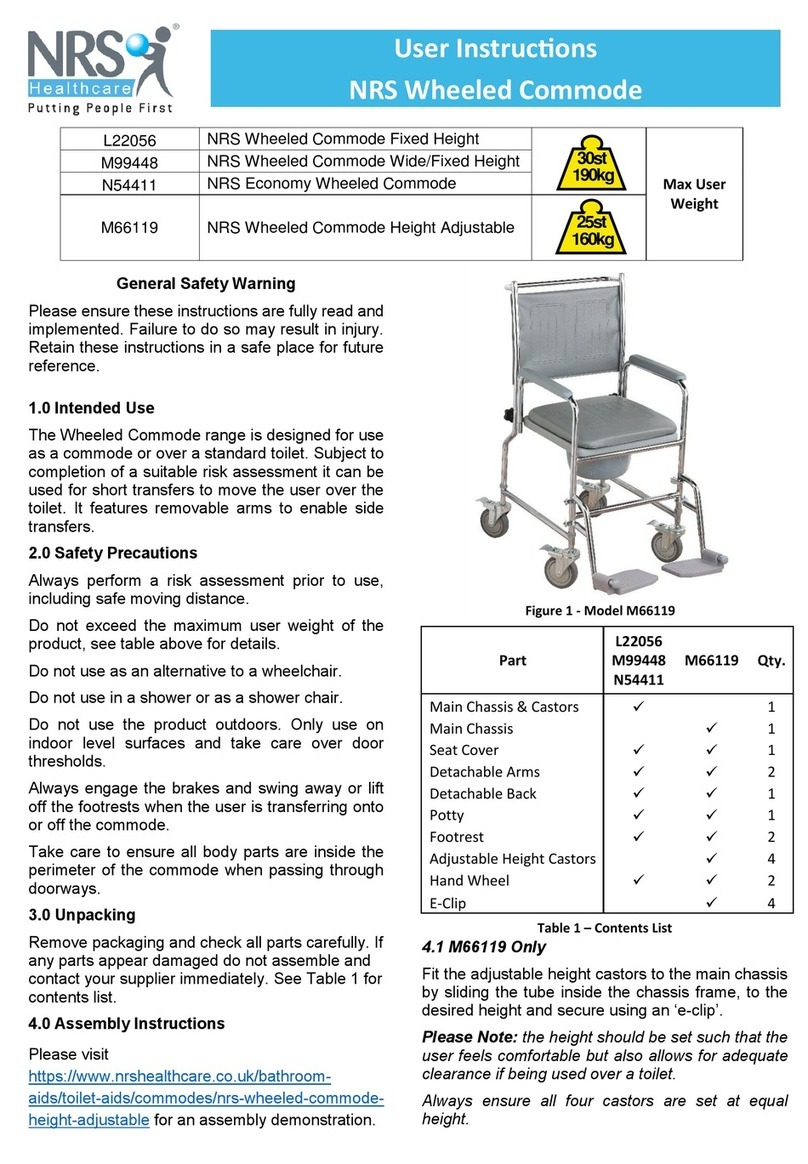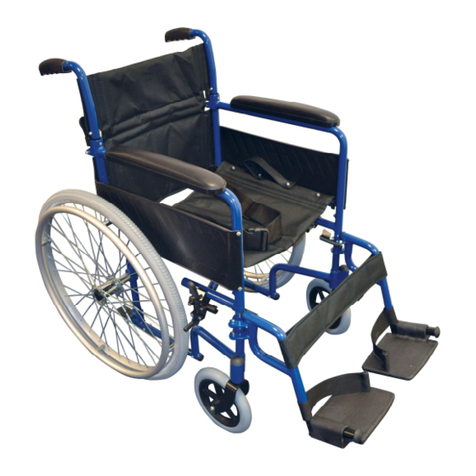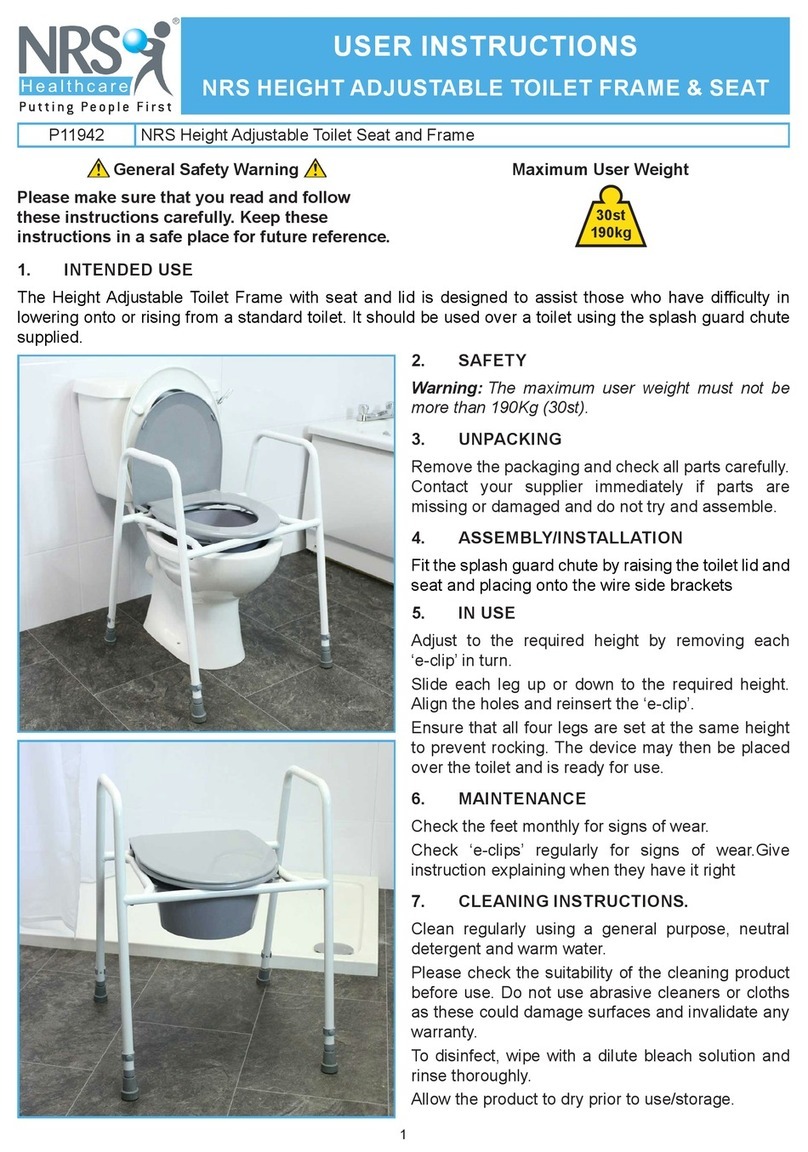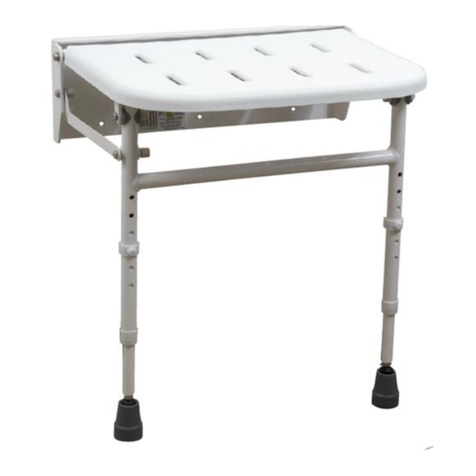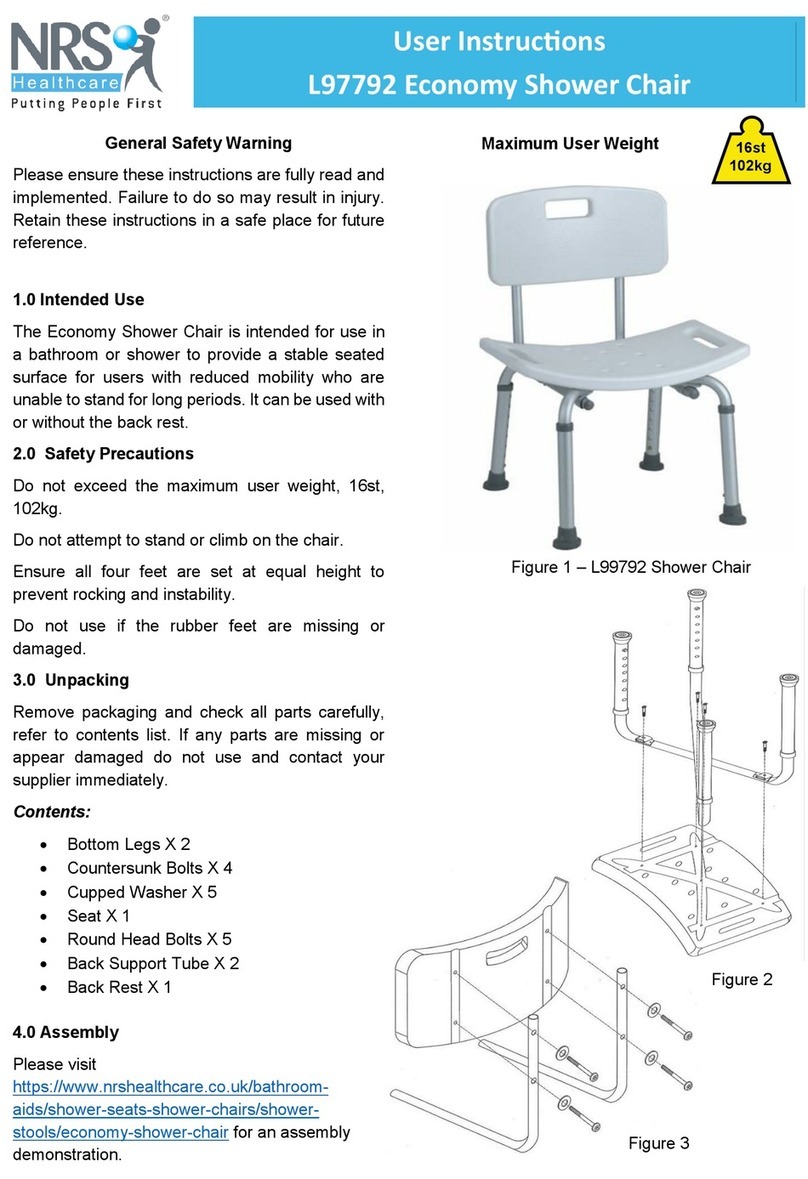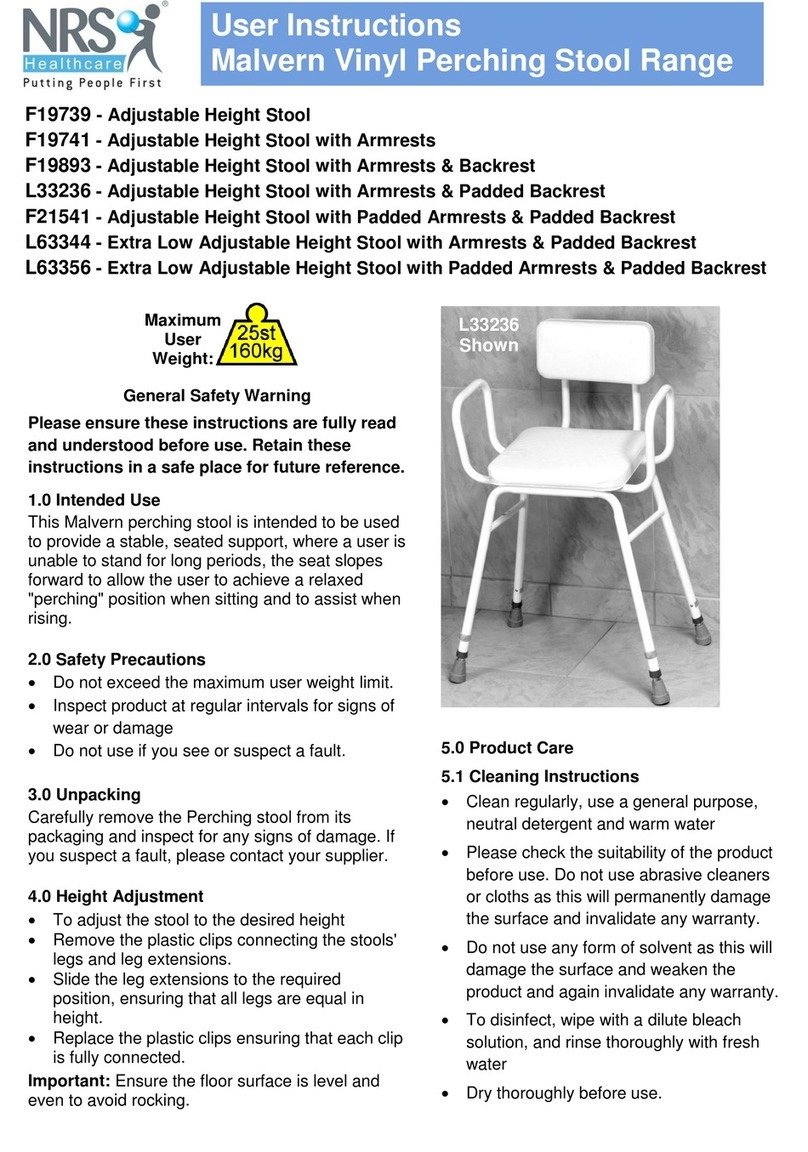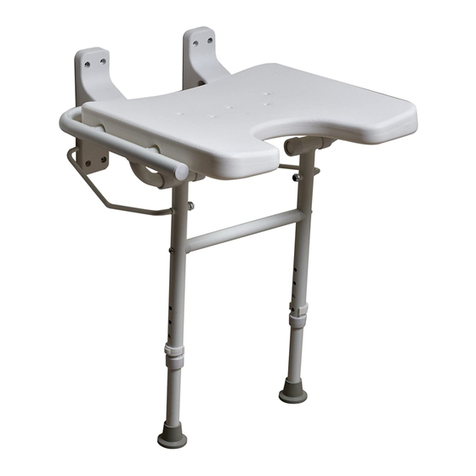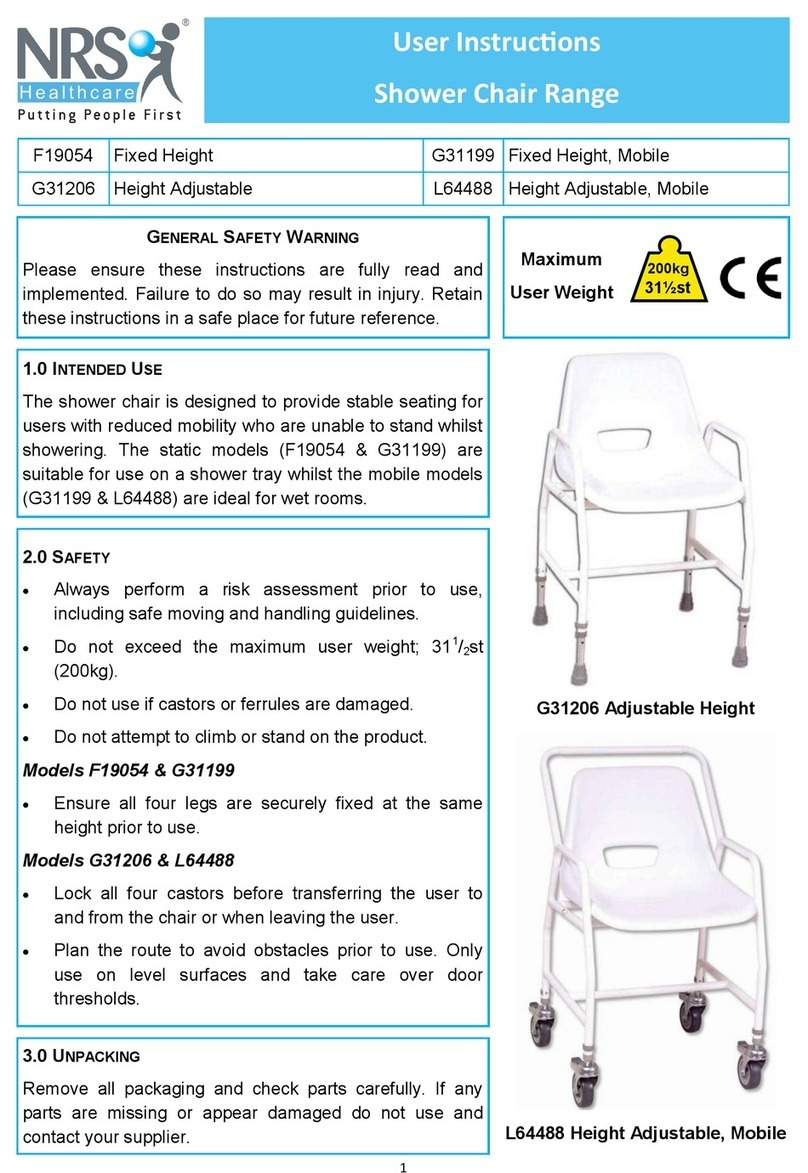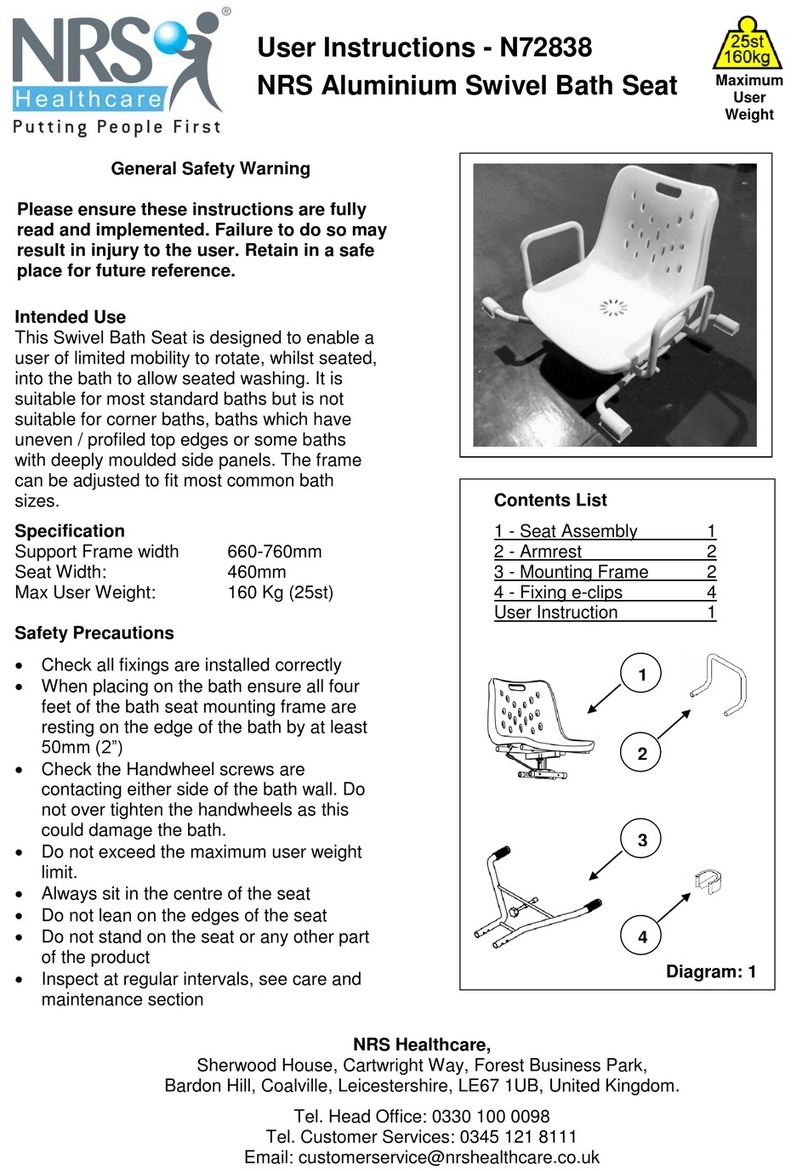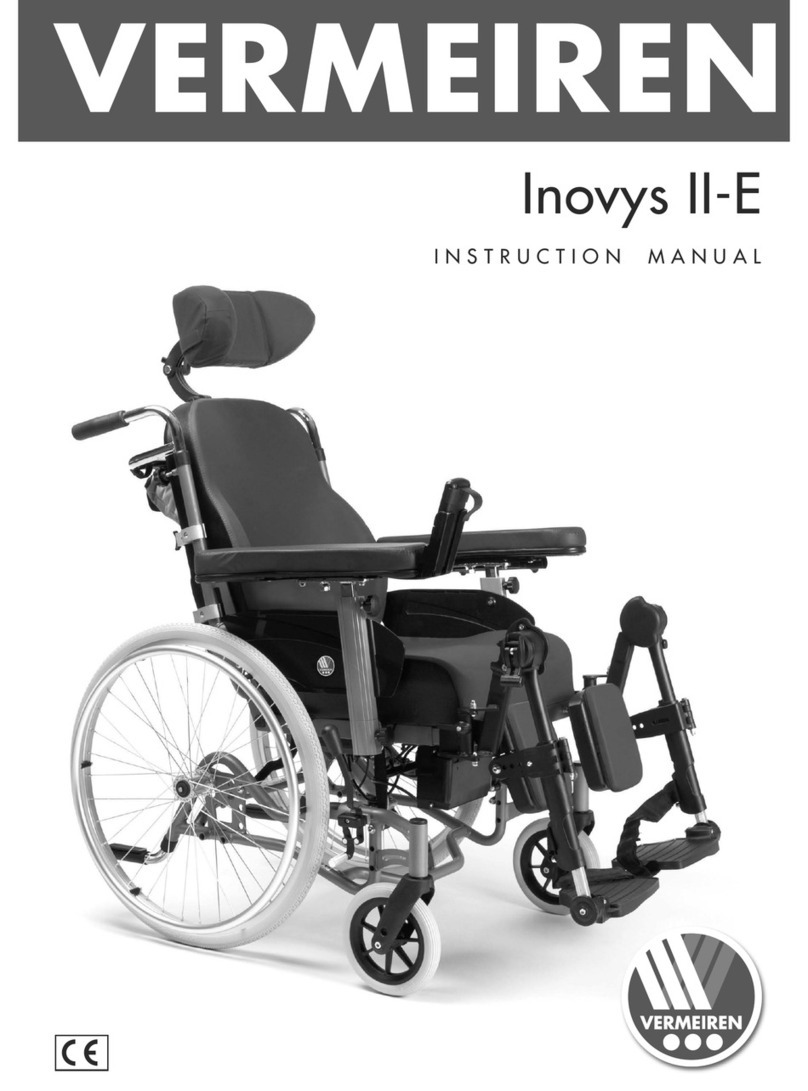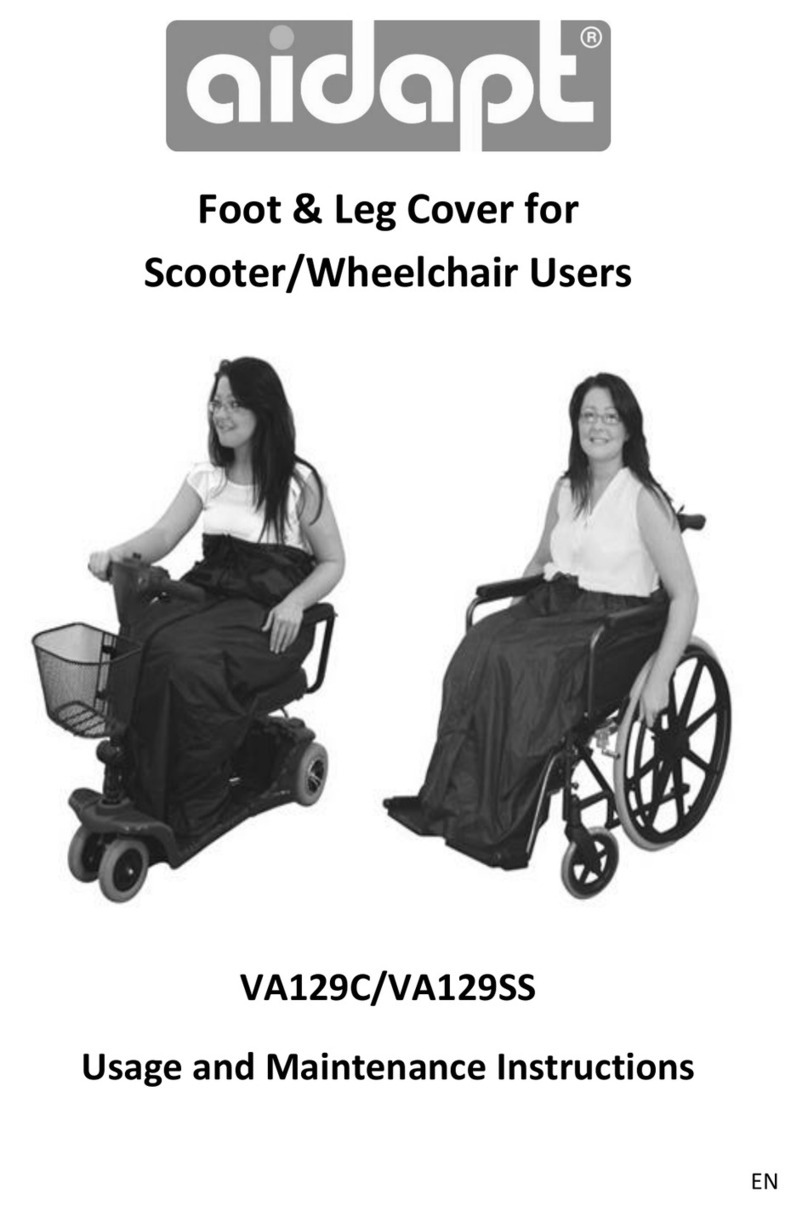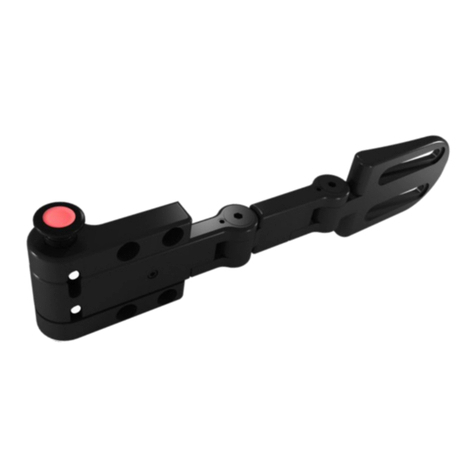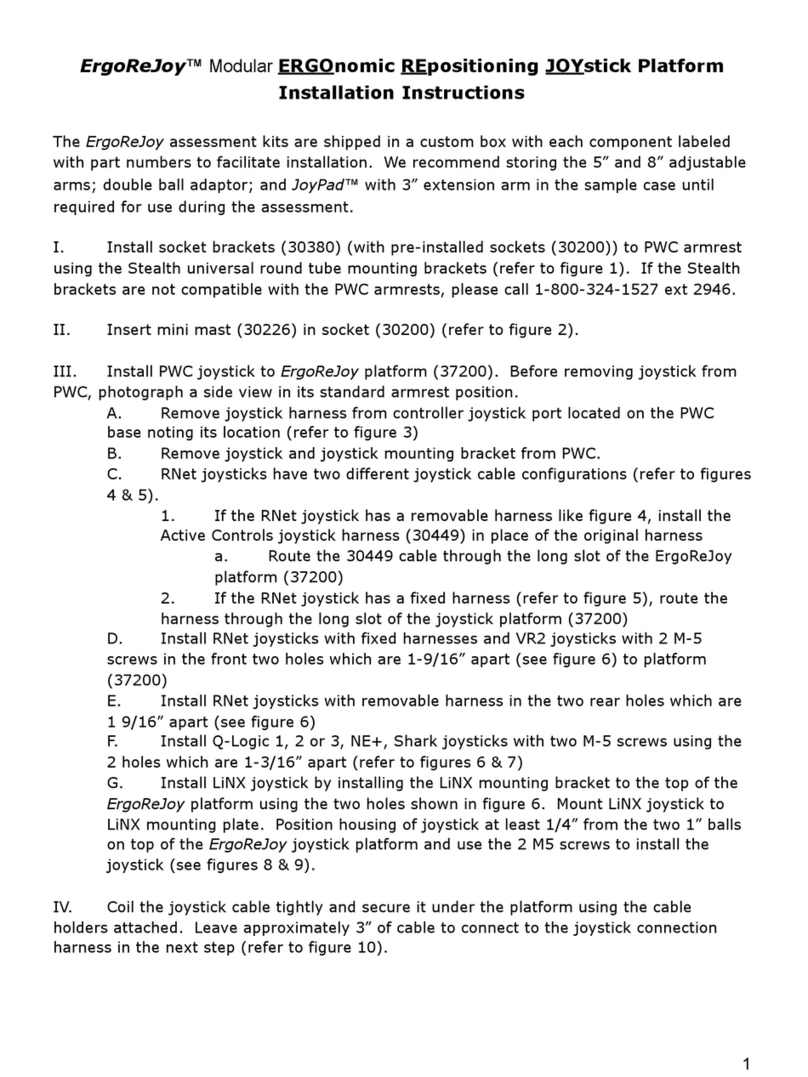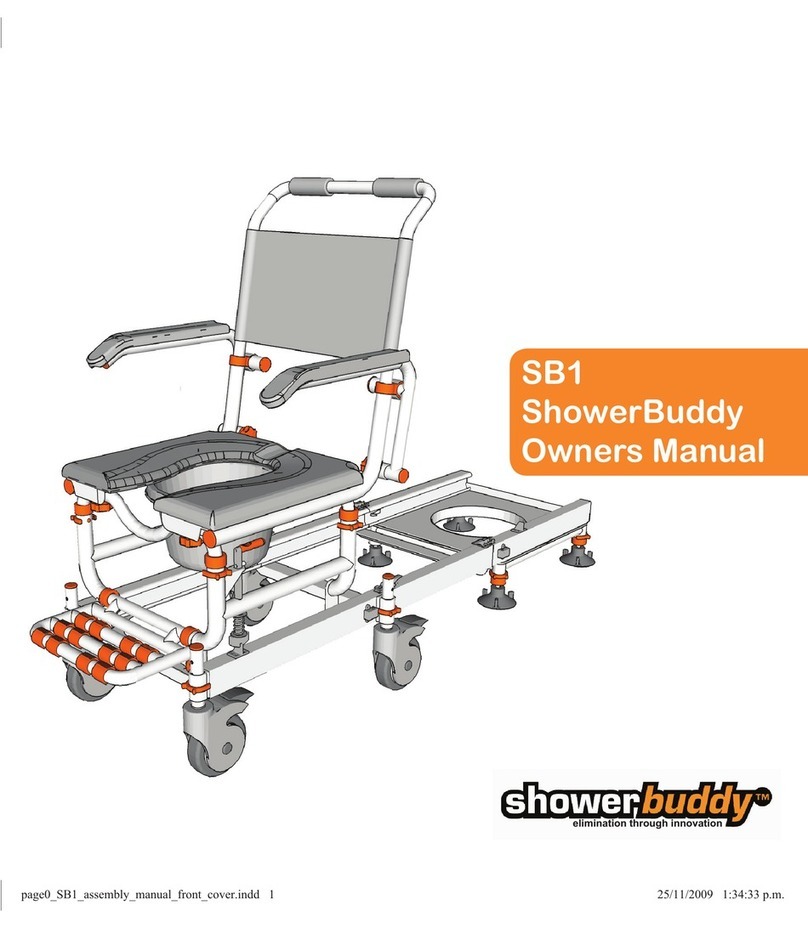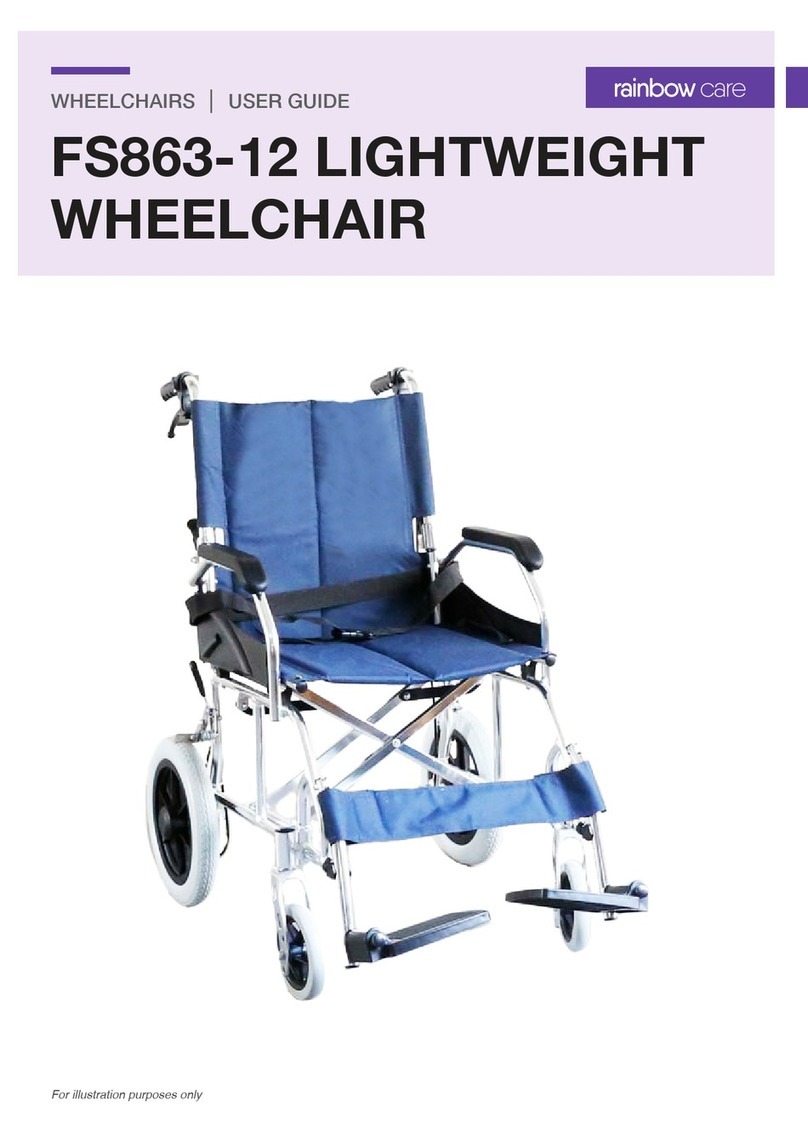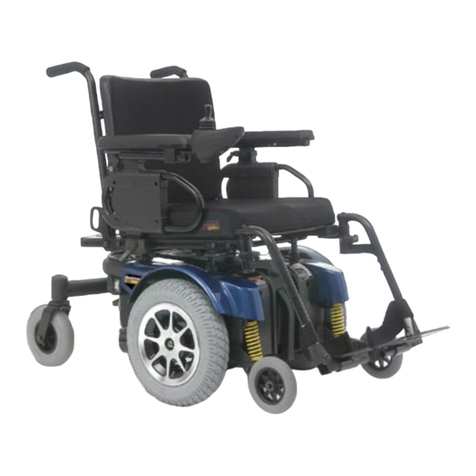
·Outdoor: Steep gradients should be avoided,
assistance is recommended if you are
negotiating slopes steeper than ten degrees
·If attempting gradients, or using a ramp it is
important to be sure of your own capabilities,
NRS recommend that you consult a
Healthcare Professional for advice before use.
·Always maintain a constant slow speed on
gradients.
·Use the rear wheel hand rims to control all
movement, alternatively an attendant can
assist using the rear handles.
·Do not reverse down a gradient.
·Avoid rugged/uneven terrain.
·Indoor: Be aware of local hazards, for
example, obstructions on the floor, narrow
doorways high thresholds etc.
·Do not use on escalators.
·Before transferring into or out of the
wheelchair ensure the brakes are in the
locked position.
·Do not stand on the footplates.
·When seated in the wheelchair ensure you are
comfortable and your centre of gravity is in the
centre of the seat.
·Take care when performing tasks which move
your centre of gravity. Never reach so far that
it requires you to shift in the seat or bend
forward over the front wheels. If you do need
to reach forward always ensure the front
wheels are facing outwards and are locked
before attempting any manoeuvre, this will
increase the wheels footprint.
·Users feet must always be on the footplates
when the wheelchair is moving.
·Take care when ascending or descending a
kerb. When mounting a kerb, approach
forward facing, the attendant should then use
the stepper tubes, located behind the rear
axles, to raise the front wheels onto the raised
kerb, then roll the rear wheels up the kerb
lifting as required.
·When descending a kerb the front wheels should
be lined up parallel with the front edge of the kerb,
then using the stepper tubes the attendant raises
the front wheels slightly to the balancing point of
the chair and then gently lower the rear wheels
over and down the kerb Do not raise the front
wheels by using the handles only - Always use the
stepper tubes.
·If you need to stop on an incline apply both brakes
gently, avoid sudden movements, similarly when
starting avoid sudden movements as both of these
situations could cause instability because of the
backward angle of the chair.
·Apply brakes evenly as any movement sideways
could cause instability.
·Avoid changing direction on a slope as this will
increase the risk of the wheelchair tipping.
·Do not use as seat in a motorised vehicle
·If you are unsure about any of the safety
precautions highlighted we would recommend
seeking advice from a Healthcare professional.
Cleaning Instructions
·Clean all parts regularly, wipe down with water
and mild cleanser using a soft, non abrasive cloth.
·Dry with a soft, clean, non abrasive, dry cloth.
·Ensure there is no build up of dirt or debris around
the axle, brakes and wheels.
·Do not use cleaning agents containing phenol or
chlorine, as this may damage the product
surfaces.
·Lubricate with 3-in-l oil periodically or if wheels
begin to squeak.
Maintenance
·Note all tyres on this wheelchair are solid and do
not need inflating
·Regularly check for wear and tear and that all
screws and fixings are securely fastened.
·Worn upholstery must be replaced.
·The brakes on this wheelchair are factory set and
should not need adjusting, however if the brakes
are not operating correctly and require adjusting
contact you dealer immediately
